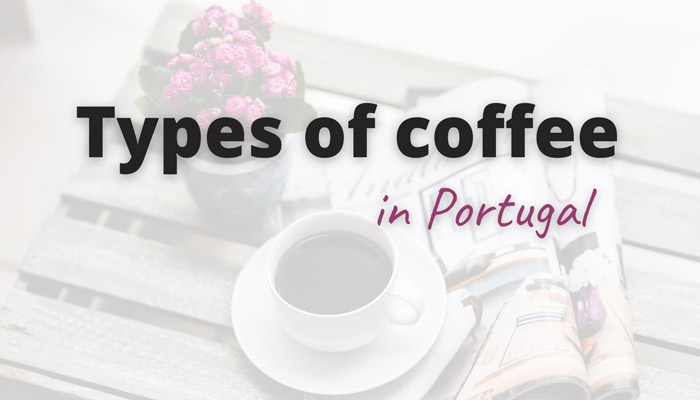If you have been to Portugal at least once, then you know that this country has a cult of coffee. Coffee is drink for any reason: to cheer up, to chat, to relax. Drink coffee at home and at work.
Not surprisingly, many different types of coffee drinks have emerged. However, the types do not depend on different varieties of coffee, but on the presence and ratio of certain ingredients. Let’s look at the main types that you can find on the menu.
Bica
The most popular coffee drink is called bica. In fact, this is espresso in a small cup, almost in a thimble. Many wonder how you can enjoy such a small amount of drink, but the Portuguese know how. As far as you can tell from the definition of espresso, bica is made up of ground coffee beans and water. The Portuguese themselves often say not “bica”, but “cafézinho” – a small coffee. A serving is approximately 50 milliliters.
Café curto
The volume of a cup for bica is 60-70 milliliters, while the volume of a regular glass is 250 milliliters.
Four times the difference! Now imagine if you fill only half of the cup – there are about 25-30 milliliters left. It is these few drops of water and coffee that are called “café curto”.
Garoto
Again we return to the composition and volume of bica, but add a little milk. Despite the fact that this type of drink exists, it is not very popular, because due to the small volume it is not a cappuccino, and because of the milk it is not an espresso. However, you need to know it so as not to get confused and understand exactly what you order in a café and what you are treated to. In general, the literal translation is “boy”.
O café pingado
If you take bica in a special cup for it and add just a drop of milk, the drink will be called “café pingado“. In this case, “pingar” is translated as “drip”, and “pingado” is an adjective derived from the verb “pingar”.
O café com cheirinho
In coffee, you can add not only milk or cream, but also something stronger, such as brandy. Brandy is made by double distilling fermented fruit juice, so it usually has a fruity aroma. Adding it to coffee gives the drink a special smell and taste. That is how “cheirinho” is translated from Portuguese – “smell”. Portuguese men love to drink “café com cheirinho” after a hearty meal.
Meia de leite
Perhaps, here we can draw the following parallel: meia de leite is an analogue of cappuccino. The ratio of coffee with water and milk is 1:1. Served in a regular cup with a volume of 150-180 milliliters. Literally, “meia de leite” translates as “half milk”.
O galão
It is the second most popular coffee drunk after bica. It also contains milk, but much more than in meia de leite. Here the ratio of coffee to milk is 1:2. Serve galão in a tall glass. Despite the fact that milk should cool the drink, it is served hot, so you need to wait a bit before drinking.
O abatanado
If we take “meia de leite” and replace milk with water, we get “o abatanado”. That is, the drink is not as concentrated as when using a smaller volume of liquid, but without using milk. Served in the same cup as “meia de leite”, and the name translates as “haggard”. It is believed that such coffee has an American style.
O carioca
If you want a less concentrated coffee, then it is better to order “o carioca” in a café . For its preparation, ground coffee is used, from which one serving of a coffee drink has already been prepared. That is, coffee grounds are reused. The caffeine content in this case is sharply reduced, and the taste loses its intensity. The name is rather strange. Usually “carioca” refers to a resident of Rio de Janeiro in Brazil.
O café sem princípio
Usually, when preparing a coffee drink, the first few drops that come out of the coffee machine are disposed of, as sediment from the previous procedure may come out of the machine along with these drops. In addition, the first drops always contain a maximum of caffeine. If these drops are not skipped, but allowed to fall into a cup with a drink, then such a drink is called “o café sem princípio”, and literally “coffee without a beginning”.
It is impossible for a simple man in the street to taste coffee with the first drops and without the first drops. No one will control the barista either, so this information about this type of drink is purely for variety.
Sugar
When you order coffee, you will never be asked if you need sugar. They will bring it to you in a small sachet, even if there is a full sugar bowl on the table. Sachets of sugar are also a peculiarity of Portugal, because usually they are made in a special style or contain a philosophical quote or nice words. Something like a cookie with a wish or a prediction. Perhaps this also played a role in the development of coffee as a national drink.
Conclusion
A foreigner is not required to know all kinds of drinks in Portugal. However, the more details he knows, the deeper his integration into Portuguese society goes.
Of course, for yourself, you can choose a couple of types of coffee drinks and order them all the time. However, it is always nice to distinguish yourself with knowledge and tell others about your deep knowledge. We hope that today we have helped you with this.

